The Hoh Rain Forest lies on the west side of Olympic National Park, about a two-hour drive from Port Angeles and under an hour from Forks. The Hoh Rain Forest is accessed by the Upper Hoh Road, off of Highway 101. |
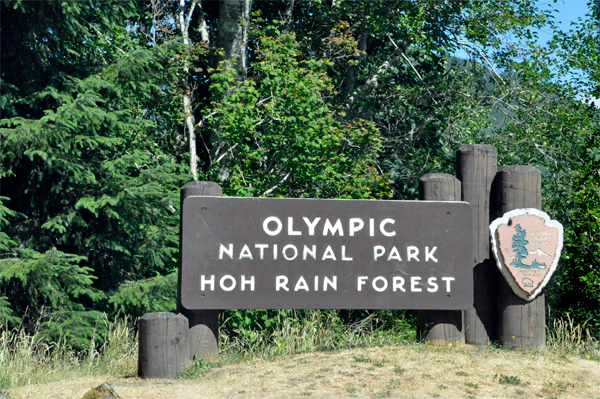
|
 Hoh Rainforest: The coastal portion of the park is a rugged, sandy beach along with a strip of adjacent forest. It is 60 miles long but just a few miles wide, with native communities at the mouths of two rivers. The Hoh River has the Hoh people and at the town of La Push at the mouth of the Quileute River live the Quileute. Hoh Rainforest: The coastal portion of the park is a rugged, sandy beach along with a strip of adjacent forest. It is 60 miles long but just a few miles wide, with native communities at the mouths of two rivers. The Hoh River has the Hoh people and at the town of La Push at the mouth of the Quileute River live the Quileute.
The western side of the park is mantled by temperate rainforests, including the Hoh Rainforest and Quinault Rainforest, which receive annual precipitation of about 150 inches, making this perhaps the wettest area in the continental United States (the island of Kauai in the state of Hawaii gets more rain).
As opposed to tropical rainforests and most other temperate rainforest regions, the rainforests of the Pacific Northwest are dominated by coniferous trees, including Sitka Spruce, Western Hemlock, Coast Douglas-fir and Western red cedar. Mosses coat the bark of these trees and even drip down from their branches in green, moist tendrils.
Valleys on the eastern side of the park also have notable old-growth forest, but the climate is notably drier. Sitka Spruce is absent, trees on average are somewhat smaller, and undergrowth is generally less dense and different in character. Immediately northeast of the park is a rather small rain shadow area where annual precipitation averages about 16 inches. |
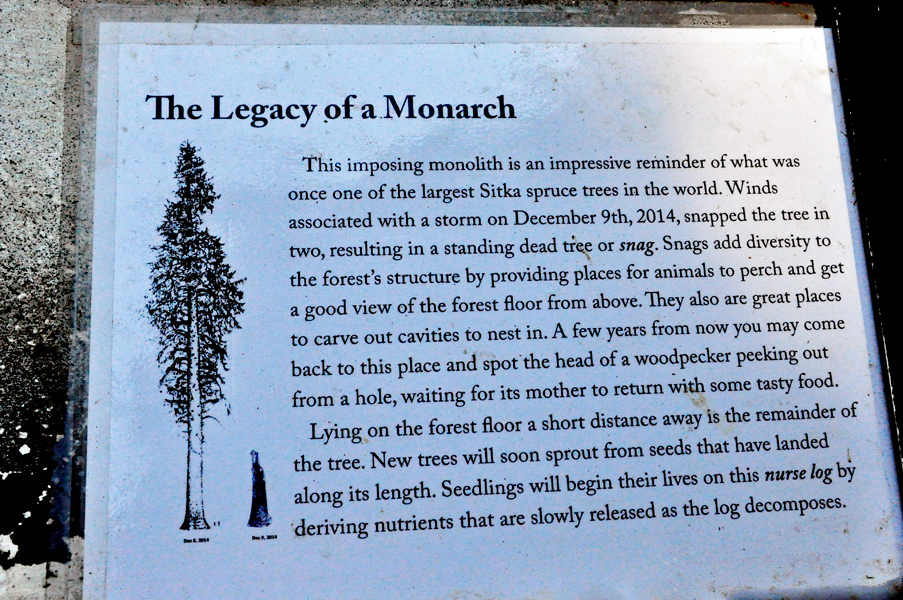
|
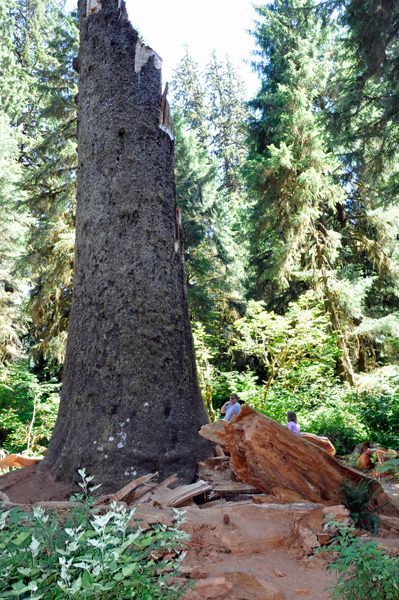
|
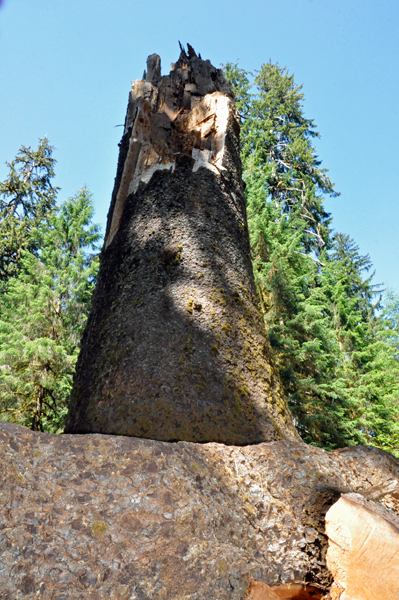
|
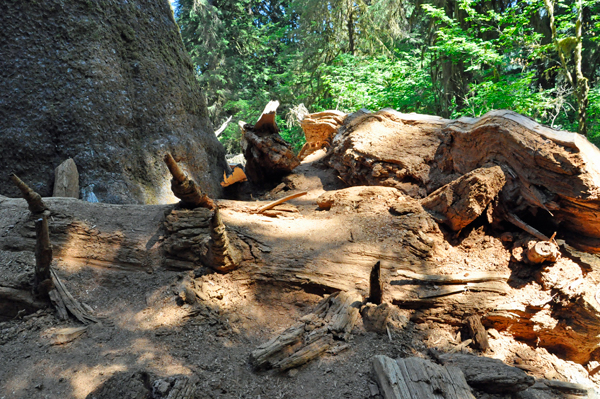
|
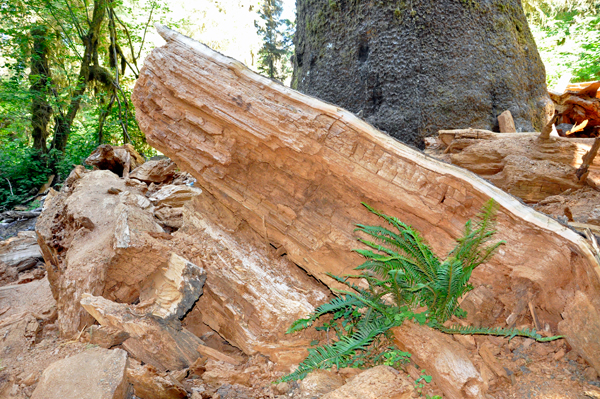
|
The dominant species in the rainforest are Sitka spruce and western hemlock; some grow to tremendous size, reaching 312 feet in height and 23 feet in diameter. Coast Douglas-fir, western red cedar, big leaf maple, red alder, vine maple, and black cottonwood are also found throughout the forest. |
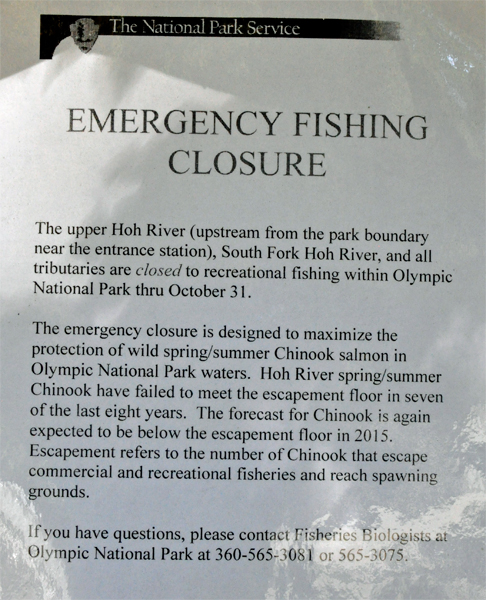
|
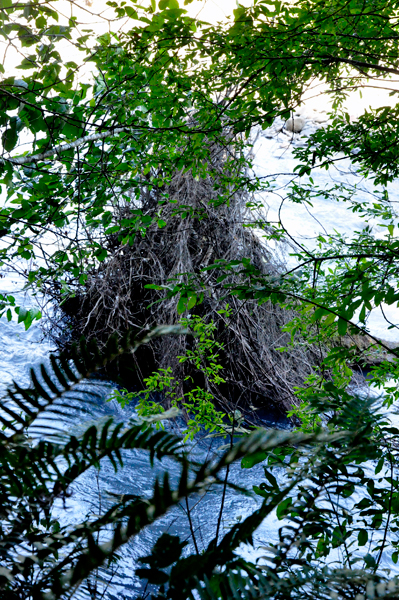
|
Below: Karen Duquette's favorite part
of the Hoh Rainforest was the Hoh River. |
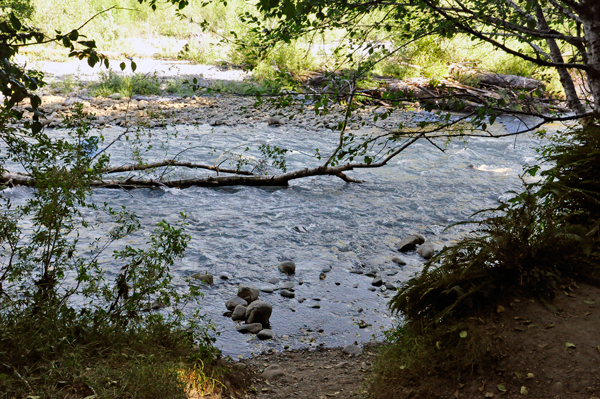
|
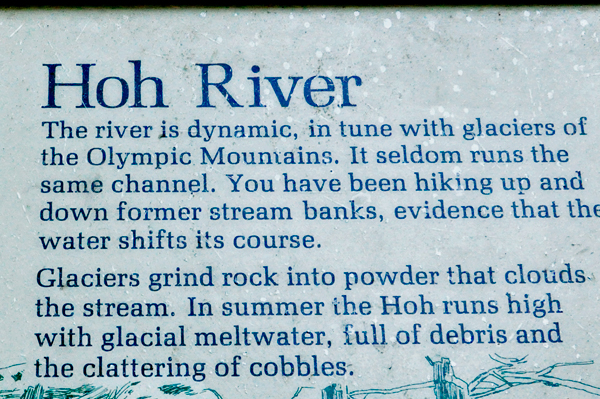
|
 There are 24 miles of low elevation forest 394 to 2,493 feet along the Hoh River. The Hoh River valley was formed thousands of years ago by glaciers. Much of the forest has been logged within the last century, although many pockets of forest remain. There are 24 miles of low elevation forest 394 to 2,493 feet along the Hoh River. The Hoh River valley was formed thousands of years ago by glaciers. Much of the forest has been logged within the last century, although many pockets of forest remain.
|
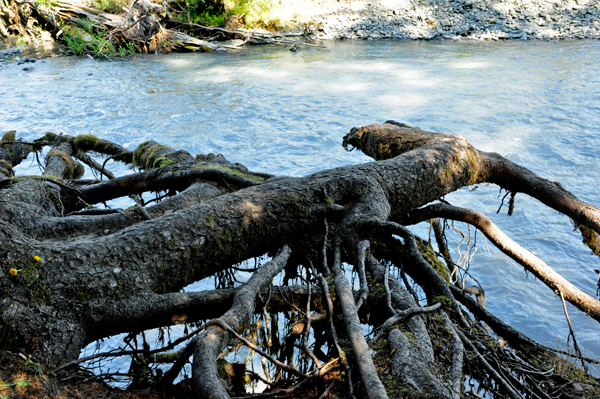
|
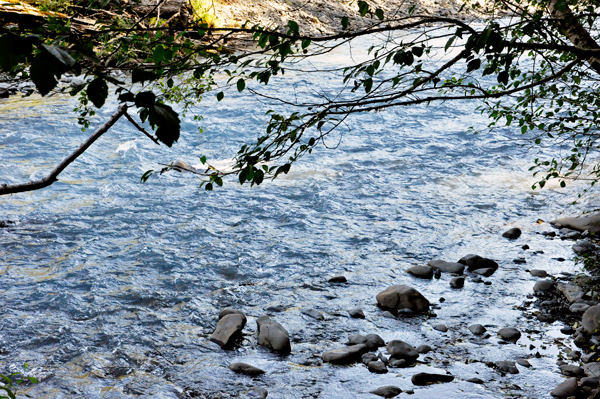
|
 The Hoh River is a river in the U.S. state of Washington, located on the Olympic Peninsula. It is about 56 miles long. The Hoh River originates at the Hoh Glacier on Mount Olympus and flows west through the Olympic Mountains of Olympic National Park and Forest, then through the foothills in a broad valley, emptying into the Pacific Ocean at the Hoh Indian Reservation. The final portion of the Hoh River's course marks the boundary between the coastal segment of Olympic National Park and Olympic National Forest, the Hoh Indian Reservation. The Hoh River is a river in the U.S. state of Washington, located on the Olympic Peninsula. It is about 56 miles long. The Hoh River originates at the Hoh Glacier on Mount Olympus and flows west through the Olympic Mountains of Olympic National Park and Forest, then through the foothills in a broad valley, emptying into the Pacific Ocean at the Hoh Indian Reservation. The final portion of the Hoh River's course marks the boundary between the coastal segment of Olympic National Park and Olympic National Forest, the Hoh Indian Reservation.
The Hoh's drainage basin is 299 square miles. Its discharge, or streamflow, has considerable seasonal variation, with summer streamflow averaging about one-third that of winter flows.
The Hoh is a glacial river fed by glaciers on Mount Olympus, such as the Blue Glacier. The glaciers grind rock into a fine glacial flour which turns the Hoh River a milky slate blue color. The river valley is generally broad and relatively flat, causing the glacial sediments to settle out, creating extensive gravel bars, river meanders, and the many side channels characteristic of a braided river. The word Hoh is a Native American term meaning "fast moving water" and describes the beautiful Hoh River perfectly. |
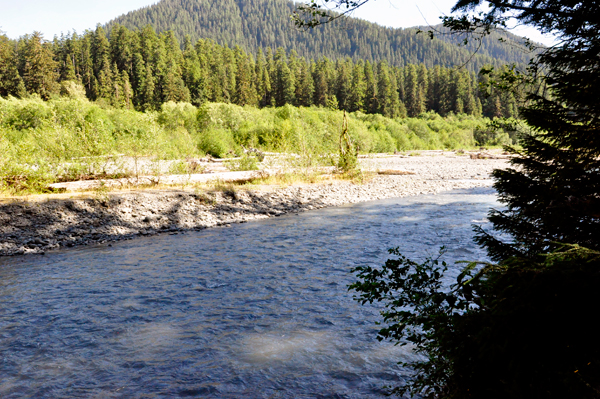
|
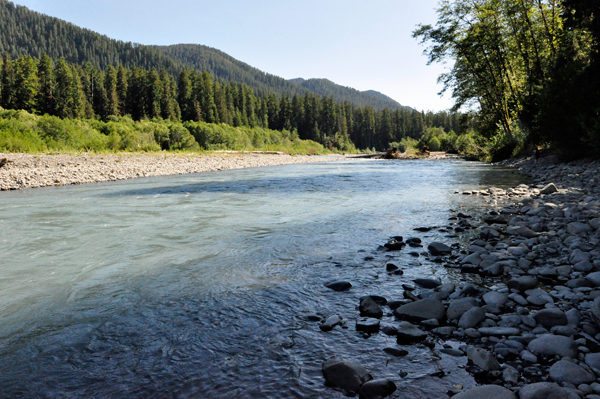
|
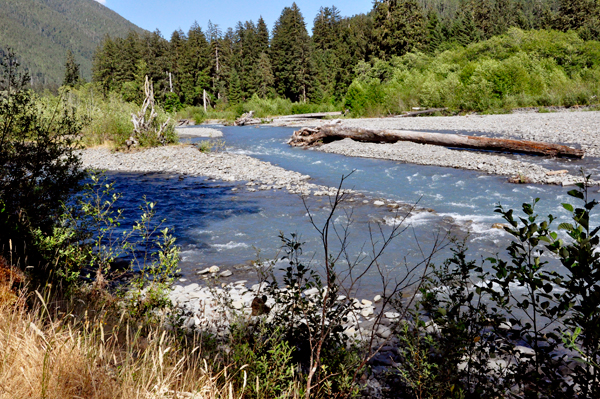 |
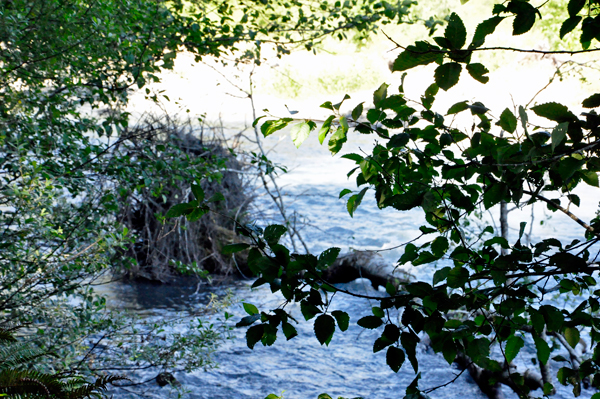 |

|
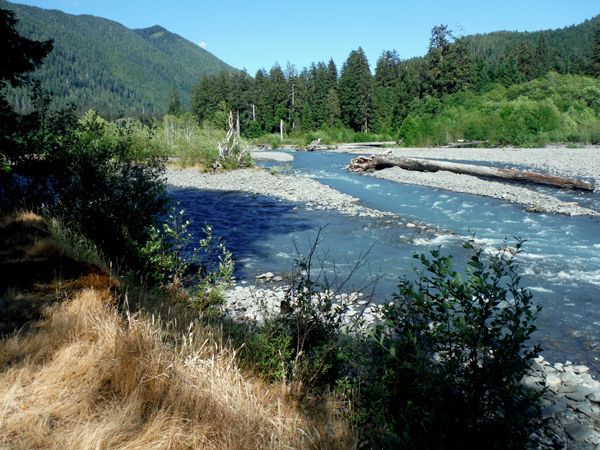
|
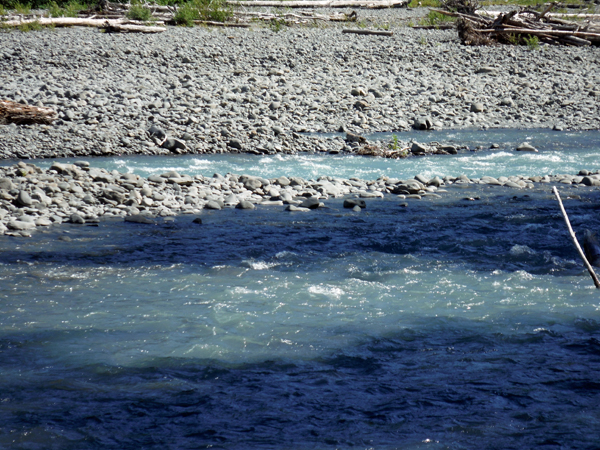
|
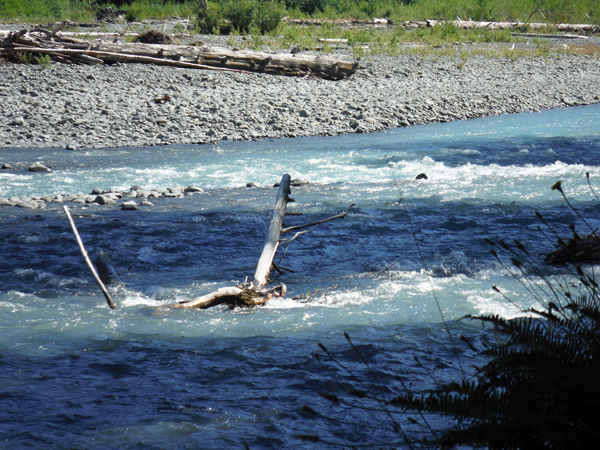
|
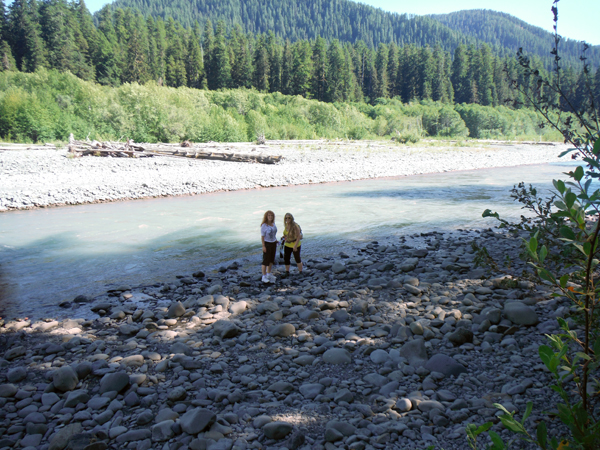
|
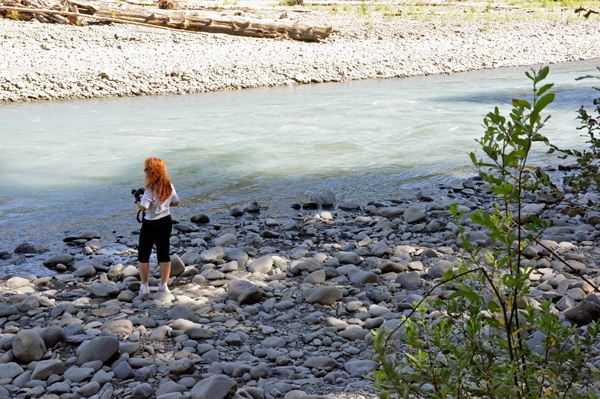
|
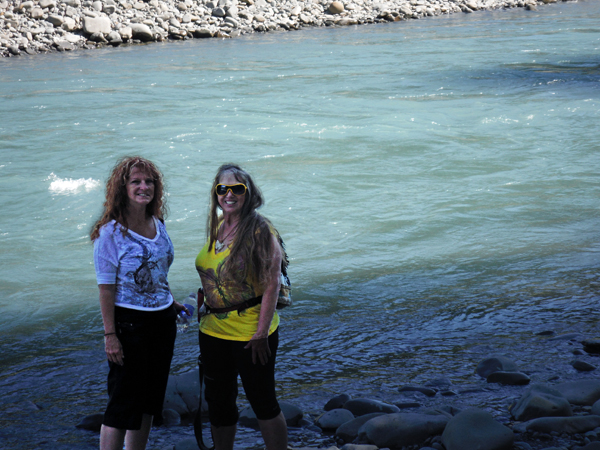
|

|
It was really dry on this day, but throughout the winter season, rain falls frequently in the Hoh Rain Forest, contributing to the yearly total of 140 to 170 inches (or 12 to 14 feet) of precipitation each year. The result is a lush, green canopy of both coniferous and deciduous species. Mosses and ferns that blanket the surfaces add another dimension to the enchantment of the rainforest. |
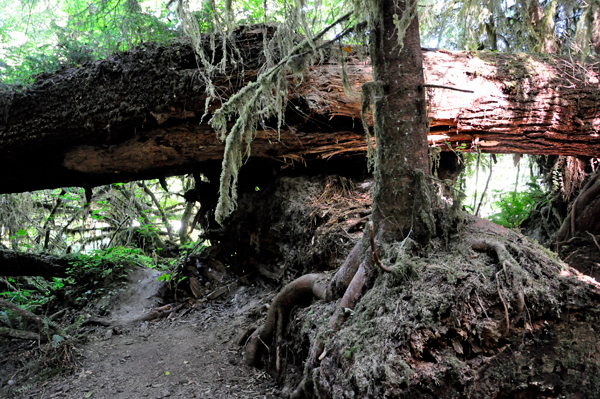
|
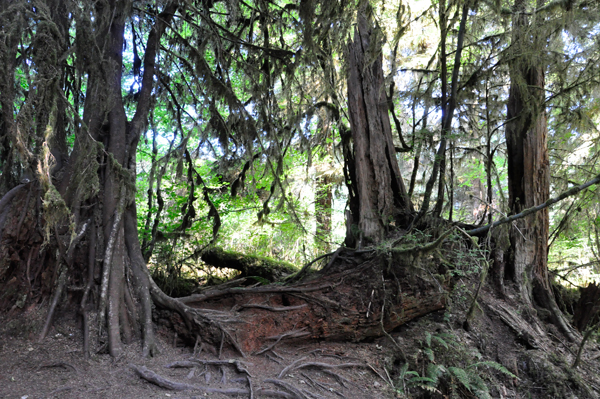
|
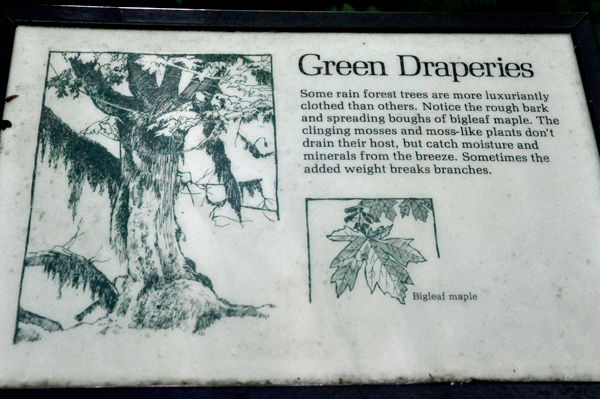 |
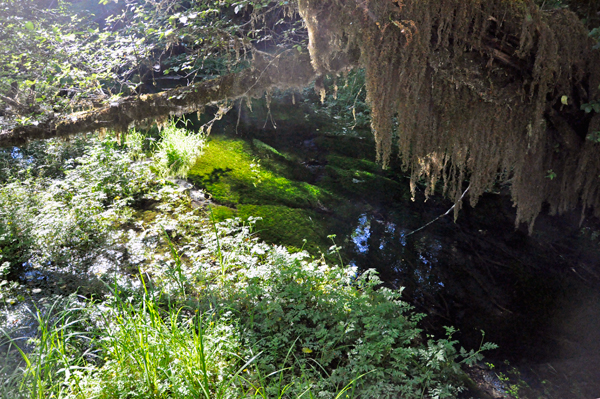 |
Below: Many tree covered stumps and branches
looked like monsters. |
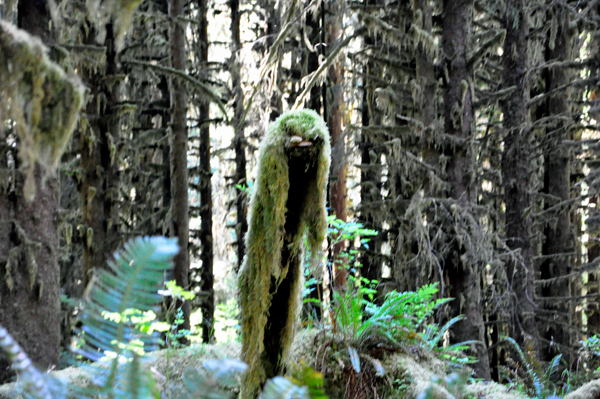
|
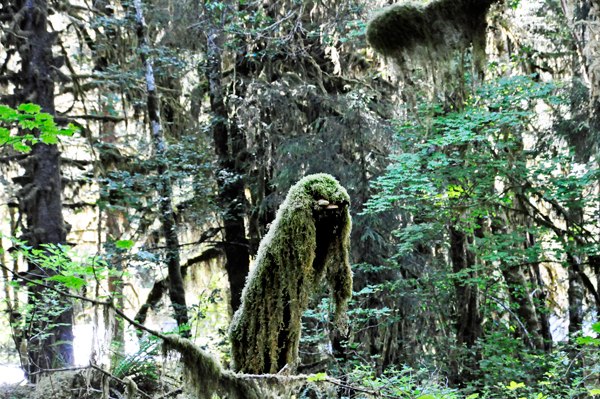
|
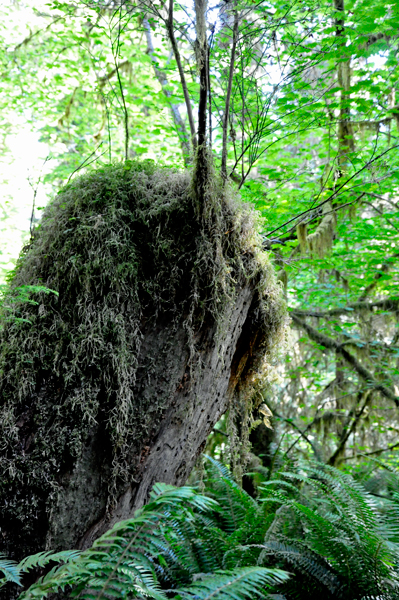
|
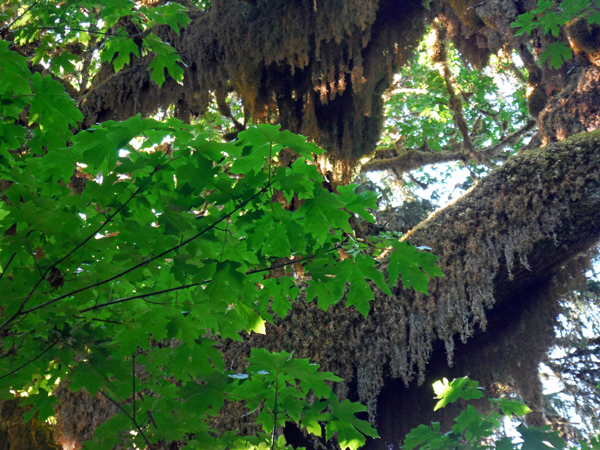 |
Below: Moss draped trees near the Hoh
River |
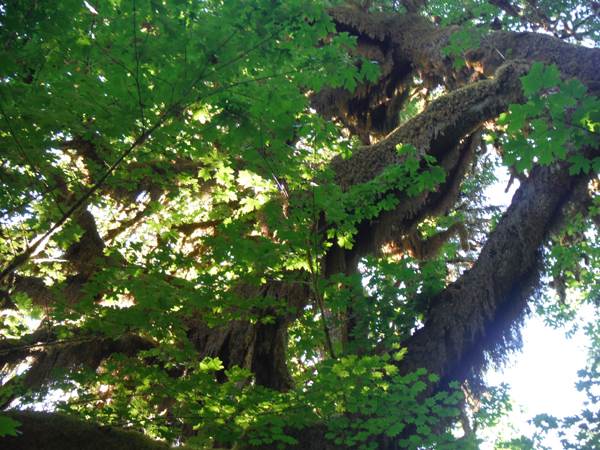 |
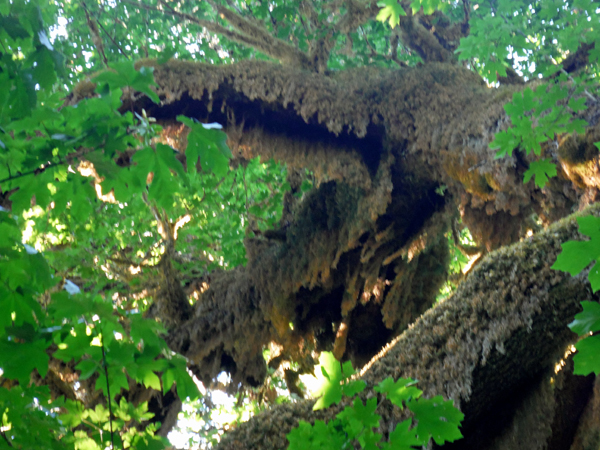 |
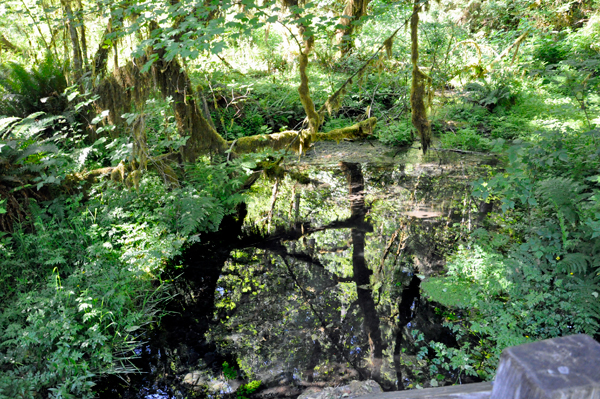
|
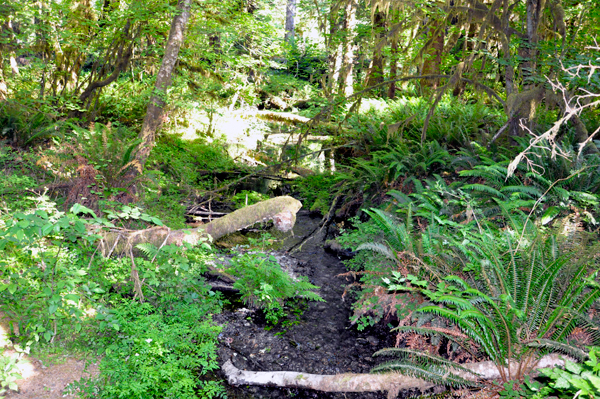
|
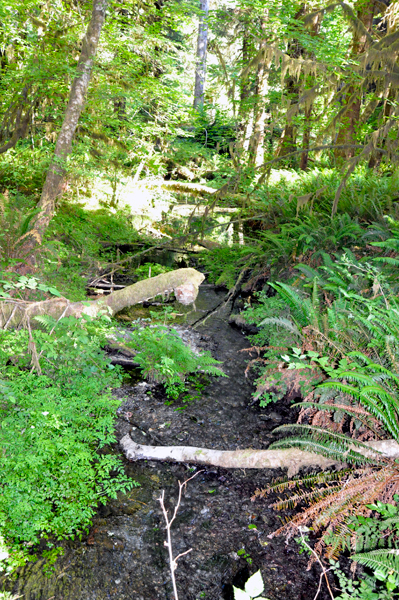
|
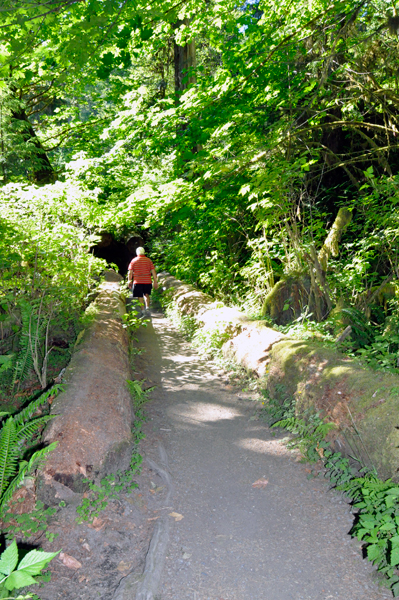
|
Below: Ilse Blahak surprised Karen Duquette
by walking on a fallen tree, since she does not like suspension bridges,
heights and stuff like that. Karen Duquette loves suspension bridges,
but did not try this, and let Ilse glow in her achievement. |
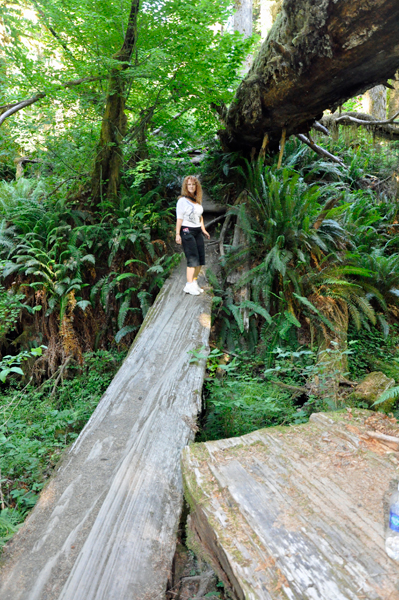
|
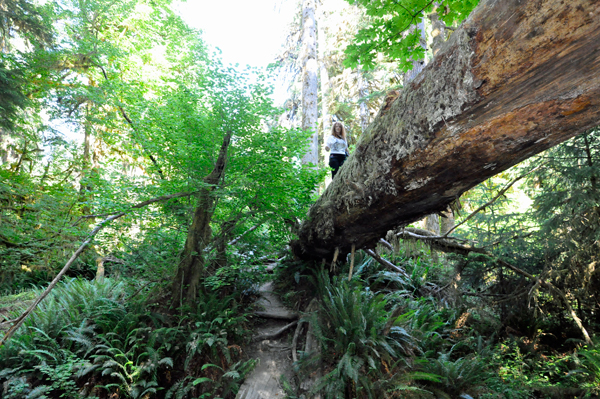
|
Below: Ilse Blahak had to really stop
and figure out how to safely turn around. |
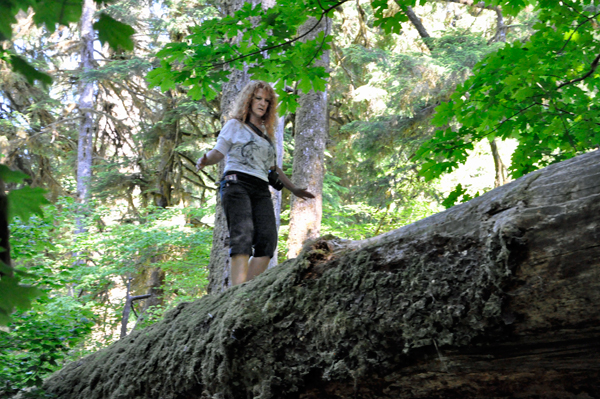
|
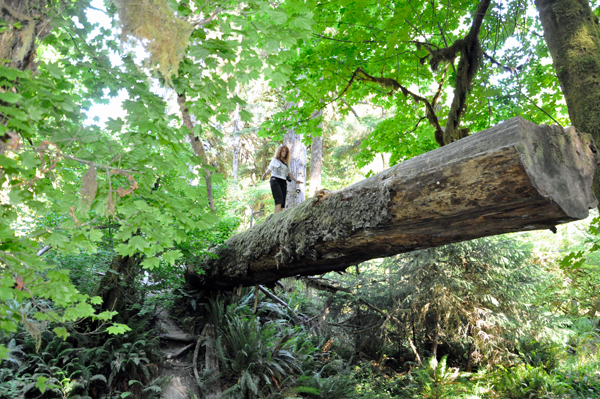
|
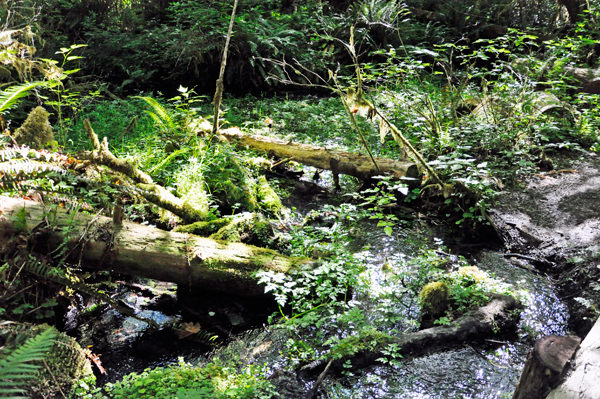
|
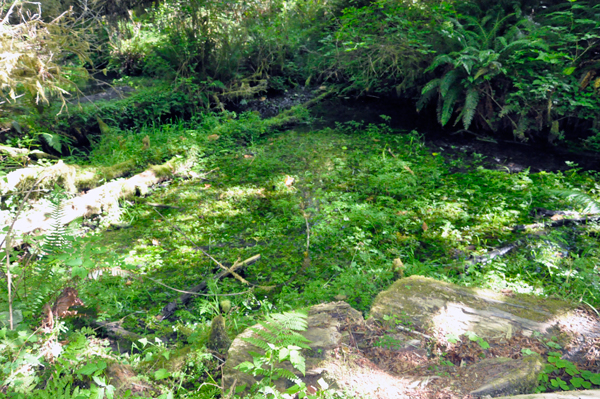
|
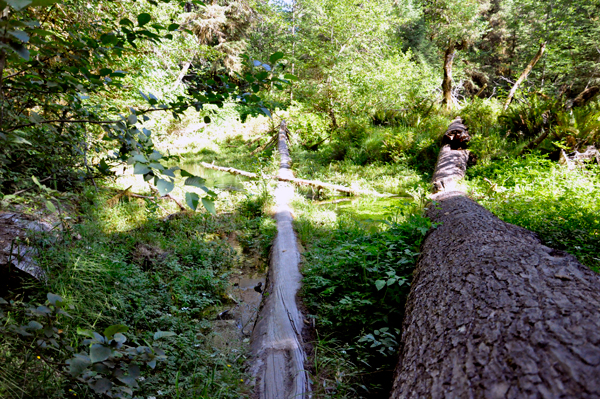
|
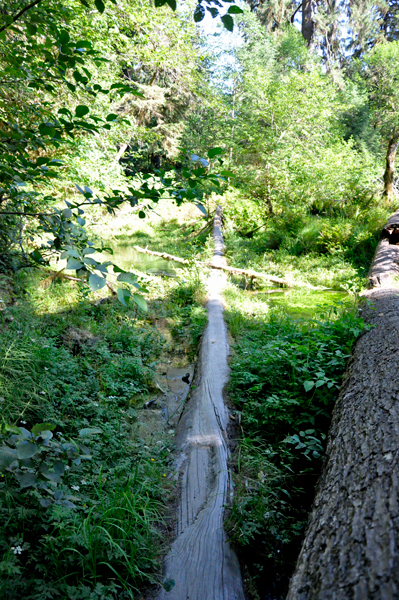
|
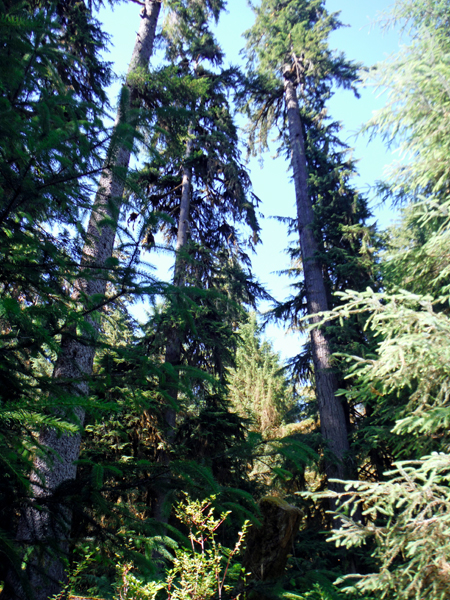
|
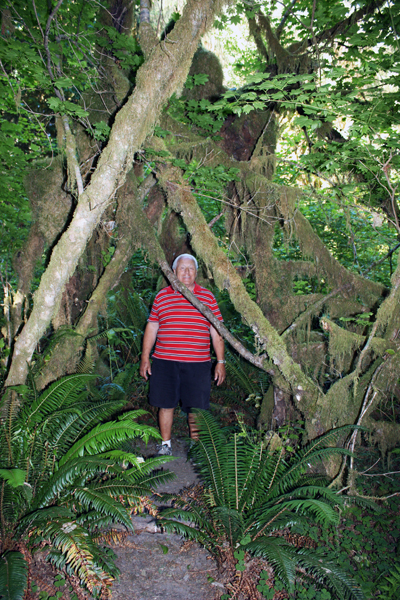
|
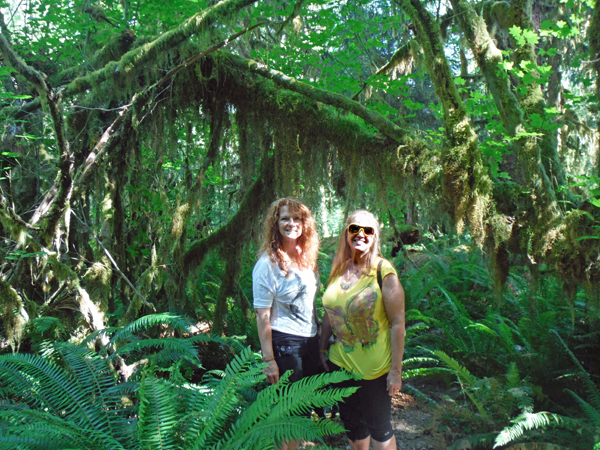
|
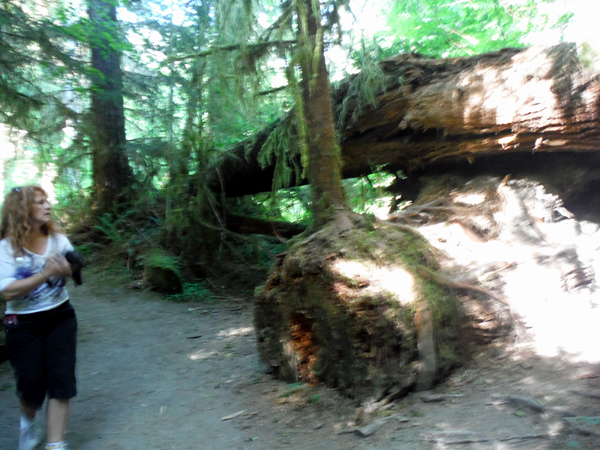
|
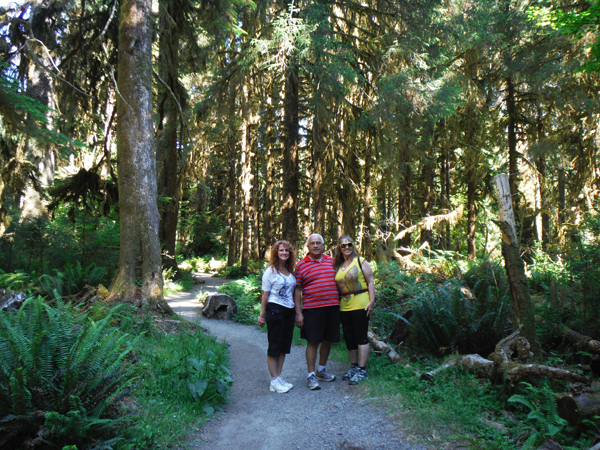
|
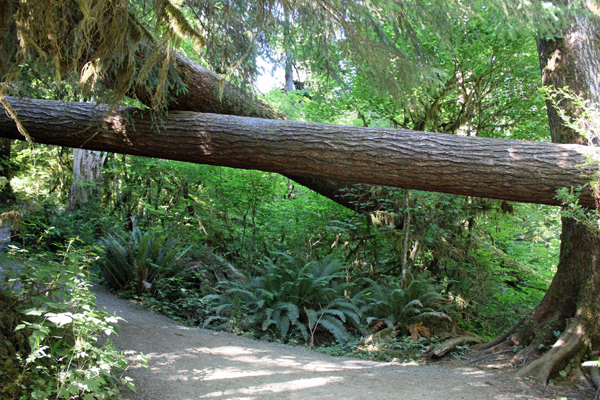
|
Below: This small, bright yellow flower was prevalent in the Hoh Rain Forest and when in the sun, it shined so brightly that it looked like tin foil. And as hard as Karen and Ilse tried, they never got a great photo of it that showed how shiny it was. A free-use photo (below on the right) was found on the internet, labeled "varileaf cinquefoil Potentilla diversifolia". |
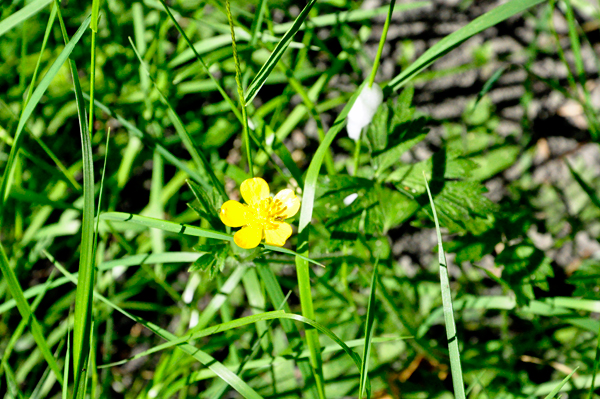
|
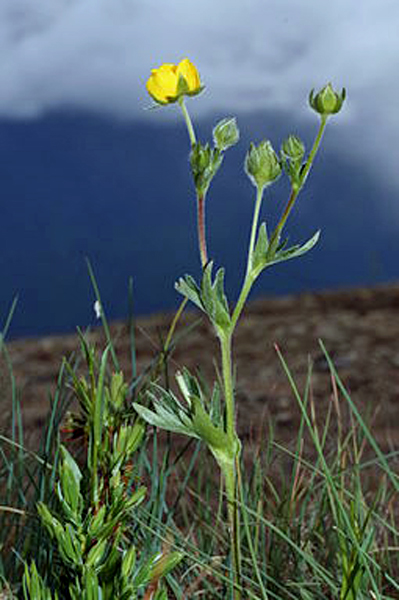
|
 |
Please continue
on to any of these 44 sections in the state of Washington that you have
not yet seen. There is also a link to BC, Canada below plus the main
navigational buttons. |
| |
|
|
|
|
Space Needle in Seattle (this page) |
|
 |
|
|
| |
|
| |
|
|
|
| |
|
|
| |
|
| |
|
| |
|
| |
|
| |
|
| |
|
| |
|
| |
|
| |
|
| |

|
|
|
 |
| |
|
|
|
|
 |
 AFTER you have seen all of the above sections,
please continue on to British Columbia, Canada: Cultus Lake, Bridal
Falls, Harrison Hot Springs, City of Hope, the tunnels, Whistler, Brandywine
Falls, Sea to Sky Gondola in Squamish, Shannon Falls, a bear tour, Lac
La Hache Provincial Park, Prince George, Glaciers and waterfalls in
Smithers, salmon jumping, Indians net fishing and more.
AFTER you have seen all of the above sections,
please continue on to British Columbia, Canada: Cultus Lake, Bridal
Falls, Harrison Hot Springs, City of Hope, the tunnels, Whistler, Brandywine
Falls, Sea to Sky Gondola in Squamish, Shannon Falls, a bear tour, Lac
La Hache Provincial Park, Prince George, Glaciers and waterfalls in
Smithers, salmon jumping, Indians net fishing and more.
|































 Hoh Rainforest: The coastal portion of the park is a rugged, sandy beach along with a strip of adjacent forest. It is 60 miles long but just a few miles wide, with native communities at the mouths of two rivers. The Hoh River has the Hoh people and at the town of La Push at the mouth of the Quileute River live the Quileute.
Hoh Rainforest: The coastal portion of the park is a rugged, sandy beach along with a strip of adjacent forest. It is 60 miles long but just a few miles wide, with native communities at the mouths of two rivers. The Hoh River has the Hoh people and at the town of La Push at the mouth of the Quileute River live the Quileute.















































